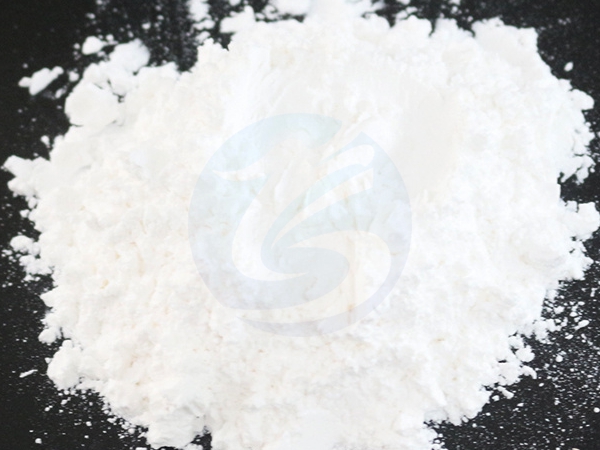
NaY zeolite molecular sieves with a pore size of 0.74 nanometers are injecting new vitality into the fields of energy, chemical engineering and environmental protection with their unique crystal structure and controllable properties.
Breakthrough in core production technology
1. Guidance agent regulation crystallization technology
By adopting a self-developed silicon-aluminum guide agent system, the use of organic template agents in traditional synthesis has been successfully replaced. This innovation not only shortens the crystallization cycle from 72 hours to within 24 hours, but also significantly enhances the crystallinity of the product, expanding the silicon-aluminum ratio control range of NaY zeolite to 2.0-6.0, meeting the precise demands of different application scenarios.
2. Optimization of dynamic crystallization process
By establishing a multi-parameter coordinated control system of temperature, alkalinity and stirring speed, the precise regulation of crystal size within the range of 200 to 800 nanometers has been achieved. This process effectively avoids the formation of heterocrystals, increasing the product purity from the traditional 85% to over 98%, and significantly improving the batch-to-batch stability.
3. Green post-processing technology
A series of green modification processes have been developed, including the combined use of ion exchange and microwave activation, steam treatment and selective dealuminization. The specific surface area of the optimized NaY zeolite can reach over 900 square meters per gram, achieving directional regulation of acidity and adsorption performance while maintaining the integrity of the crystal structure.
4. Diversified application expansion: From petroleum refining to environmental governance
NaY zeolite, with its extremely large pore volume, regular pore structure and excellent ion exchange capacity, has demonstrated unique value in multiple industrial fields:
5. Breakthroughs in key technologies for petroleum refining
In the field of oil refining, the use of rare earth-modified NaY zeolite as a key component of catalytic cracking catalysts has significantly enhanced gasoline yield and quality. Industrial operation data shows that the unit using the new NaY zeolite-based catalyst has increased the light oil yield by 2.1 percentage points and reduced the catalyst consumption by 18%, creating significant economic benefits for the refinery.
6. Deep purification of volatile organic compounds
In response to the complex VOCs control challenges in chemical industrial parks, researchers have developed an adsorption-catalysis integrated technology based on NaY zeolite. Its regular and super-large pores provide a rapid diffusion path for organic molecules. The dynamic adsorption capacity for xylene reaches 320mg/g, which is over 150% higher than that of traditional activated carbon, and the desorption energy consumption is reduced by 40%.
7. Carbon Dioxide capture and utilization
Under the background of carbon neutrality, NaY zeolite demonstrates unique advantages in the field of carbon dioxide capture. Through precise ion exchange modification, the obtained LiNaY zeolite has a CO?/N? selectivity of 150, demonstrating excellent cycling stability in pressure swing adsorption tests and providing a reliable solution for carbon reduction in coal-fired power plants and chemical plants.
8. Innovation in heavy metal Pollution Control
Based on the excellent ion exchange performance of NaY zeolite, deep purification materials for heavy metal wastewater have been developed. Its saturated adsorption capacity for lead ions reaches 285mg/g, maintaining a stable removal effect within a wide pH range of 3 to 10, providing a new technical path for water pollution control in industries such as electroplating and mining.
9. Industry Prospects and Future Outlook
With increasingly strict environmental protection requirements and the urgent need for transformation and upgrading in the refining and chemical industry, high-performance NaY zeolite molecular sieves are embracing new development opportunities. According to industry forecasts, the global demand for high-performance NaY zeolite will continue to grow at an average annual rate of 10% over the next five years. "The technological progress of NaY zeolite is not only reflected in the optimization of the production process, but also in the continuous expansion of application fields," said an expert in the field of materials. "Its unique structural characteristics and controllable performance have endowed this classic material with new vitality in the new era."
At present, all parties involved in industry, academia and research are committed to promoting the functionalization and specialization of NaY zeolite. By precisely regulating the pore structure and surface properties, specialized products for specific application scenarios are developed. Meanwhile, the continuous innovation of green manufacturing processes will also lay a solid foundation for the sustainable development of NaY zeolite. The technological innovation and application expansion of NaY zeolite molecular sieves fully demonstrate the huge potential of traditional materials to achieve value enhancement through continuous innovation. With the deepening of research and development work and the accumulation of application experience, this classic zeolite material is bound to demonstrate its unique value in more fields, providing strong support for the green development and transformation and upgrading of industry.
